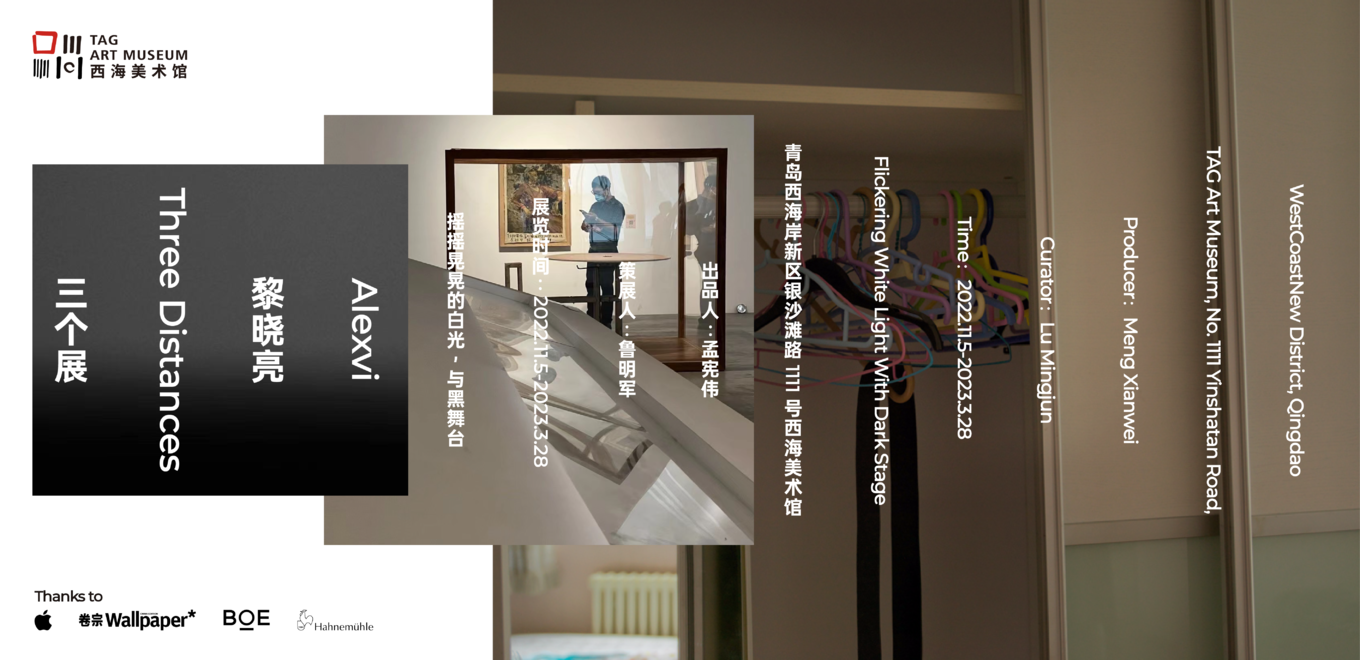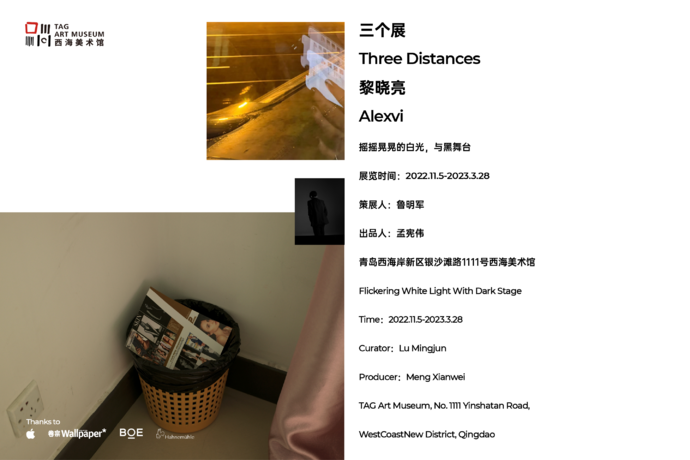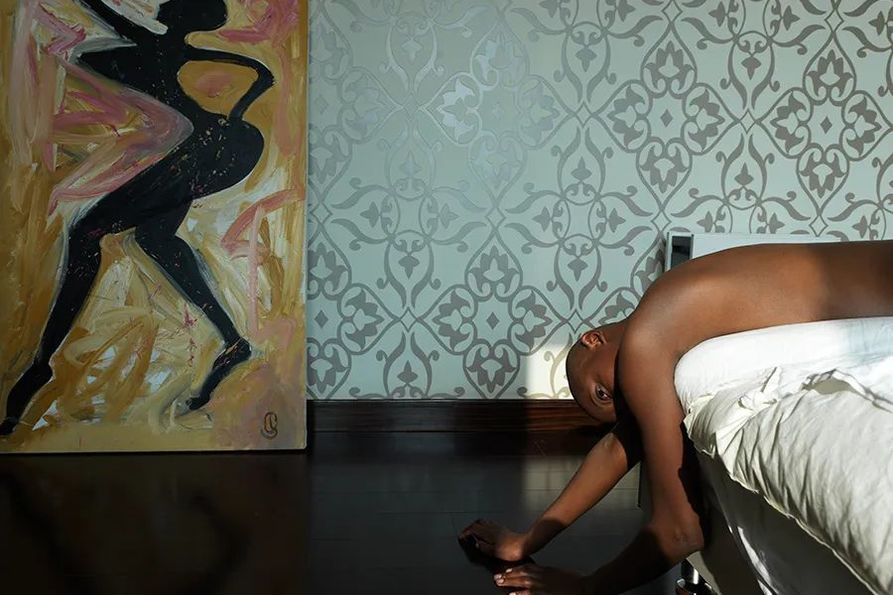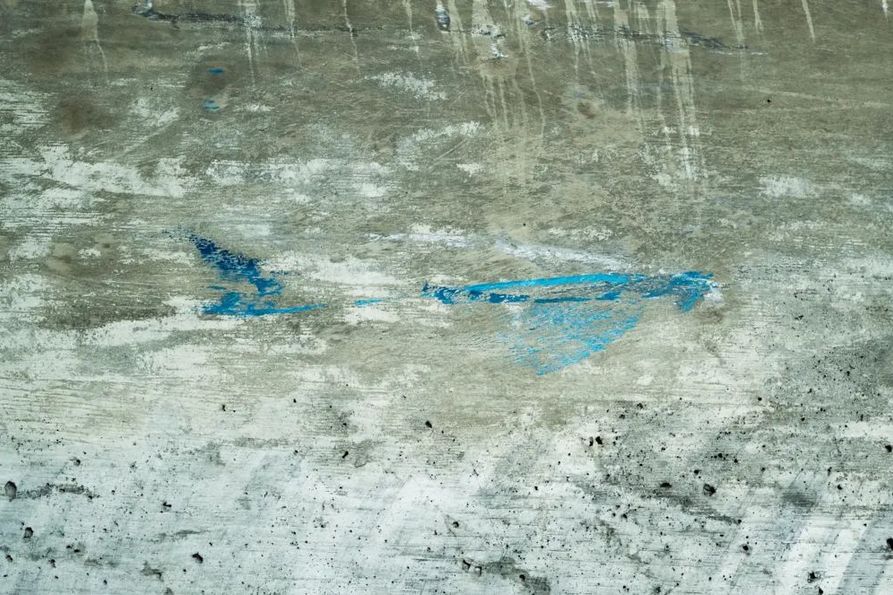TAG NEW | Alexvi: Three Distances——Flickering White Light With Dark Stage
On November 5, 2022, the new exhibition of TAG Art Museum “Alexvi: Three Distances – Flickering White Light With Dark Stage” kicked off.
Unlike the former one “Three Distances from Photography to Human,” this new exhibition is themed on “white light with dark stage,” realigns Alexvi’s artwork series in a new display style, representing his constant exploration into media of photography and dynamic image as a photographer, director and an image artist.

Alexvi: Three Distances——Flickering White Light With Dark Stage
Curator: Lu Mingjun
Producer: Meng Xianwei
Exhibition Date: 2022.11.05-2023.03.28

Curator Foreword
By Lu Mingjun
Though Alexvi shows up in the capacity of a fashion photographer, he has always focused his camera more on, instead of celebrities and public figures, many ordinary people. Even when photographing celebrities and public figures, he also has his own distinctive image grammar and aesthetic style, through which he not only blurs their identity and social stratum disparity, but also reveals loneliness, separation and numbness on varying degrees that are hidden in everyone, whether they are celebrities or ordinary people, and unknown to others.
This is the 6th stop of Alexvi’s “Three Distances” touring exhibition, after UCCA Lab, Shanghai chi K11 Art Museum, Three Shadows Photography Art Centre in Xiamen, Xie Zilong Photography Museum in Changsha and K11 MUSEA in Hong Kong. The five previous exhibitions focus on “the (three) distances between photography and human”. The new exhibition, from the perspective of “light and stage”, attempts to re-establish relations among his series, so as to rethink and identify the reality dimension embodied in his image grammar and style.
The exhibition consists of three parts. The first part contains two series: “Peking Apartment” (2015-2022) and “Not Really an Accident” (2016-2021). In his eyes, instead of the catwalk runway, the small apartment and the city constitute the real-life stage for those foreign models. Traces in “Not Really an Accident” remind us, these foreign models, just like the ordinary people scattered everywhere, are just part of an industrial chain. For the city and the world, they are just natural and abstract dust particles, leaving behind them a quick glance or a silent sigh.
The second part is the “Lonely Planet” series. Since 2015, Alexvi has started to snap photos of people concentrating attention on their mobile phones. Up to now, he has taken thousands of such photos, which are hung on one side of an aisle-like space. Mirror on the opposite wall not only reflects these photos arranged in the form of matrix or code, but also constructs a “real” digital passage for us. Once we get into it, we might get lost in the whirlpool of flashing “false numbers” or “false codes”, just like people in the photos getting lost in smartphones or endless information.
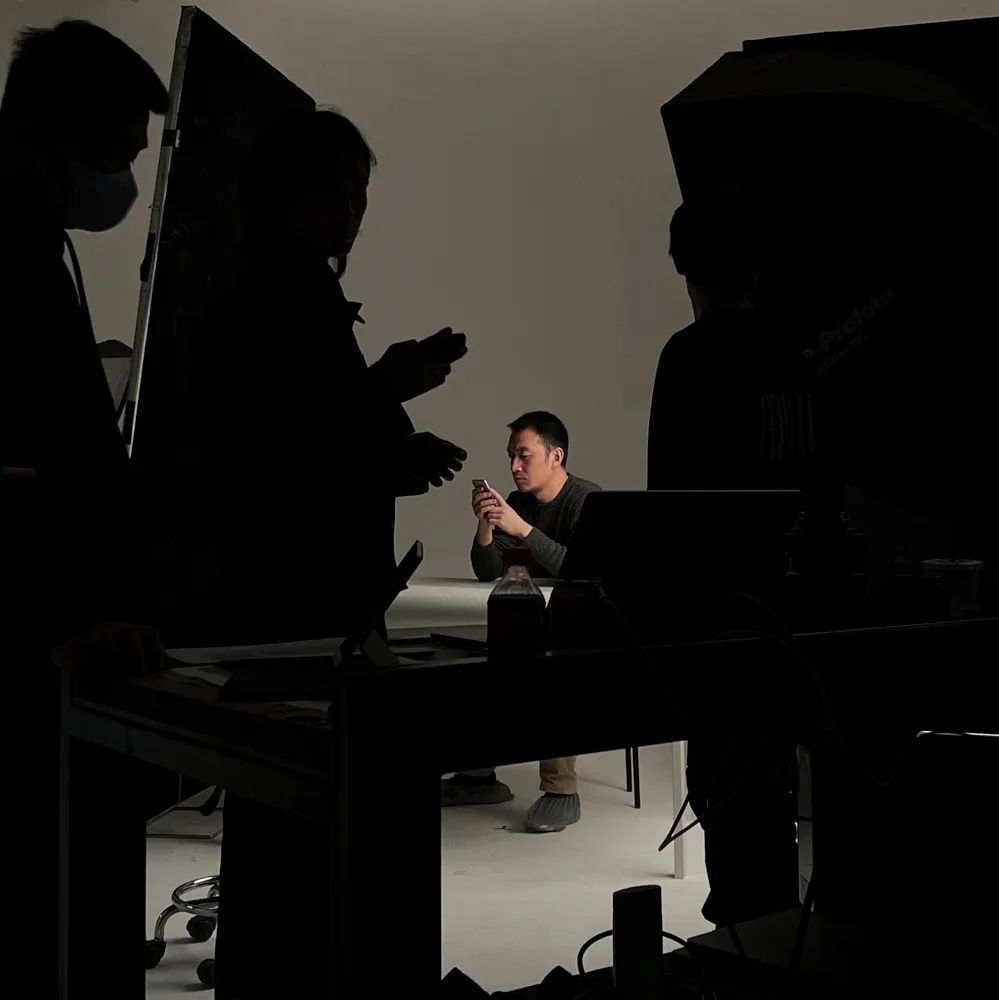
Alexvi, Lonely Planet, 2015-2022, 15 x 15cm, Mixed Media
The third part “Back to Black” (2009-2022) series is selected from the black and white portrait photos taken by him for celebrities and public figures from all over the world. Though these people differ in posture, action and expression, they are similar in photo composition: in the foreground of each photo, there is a black table, which is relied on by person in the photo. As Rembrandt’s the Conspiracy of Claudius Civilis (1669) and the Syndics of the Drapers’ Guild (1662) suggest, table represents not only power and order, but also market and transaction.

Alexvi, Back to Black, 2009-2022,80 x 60cm, Giclee Print
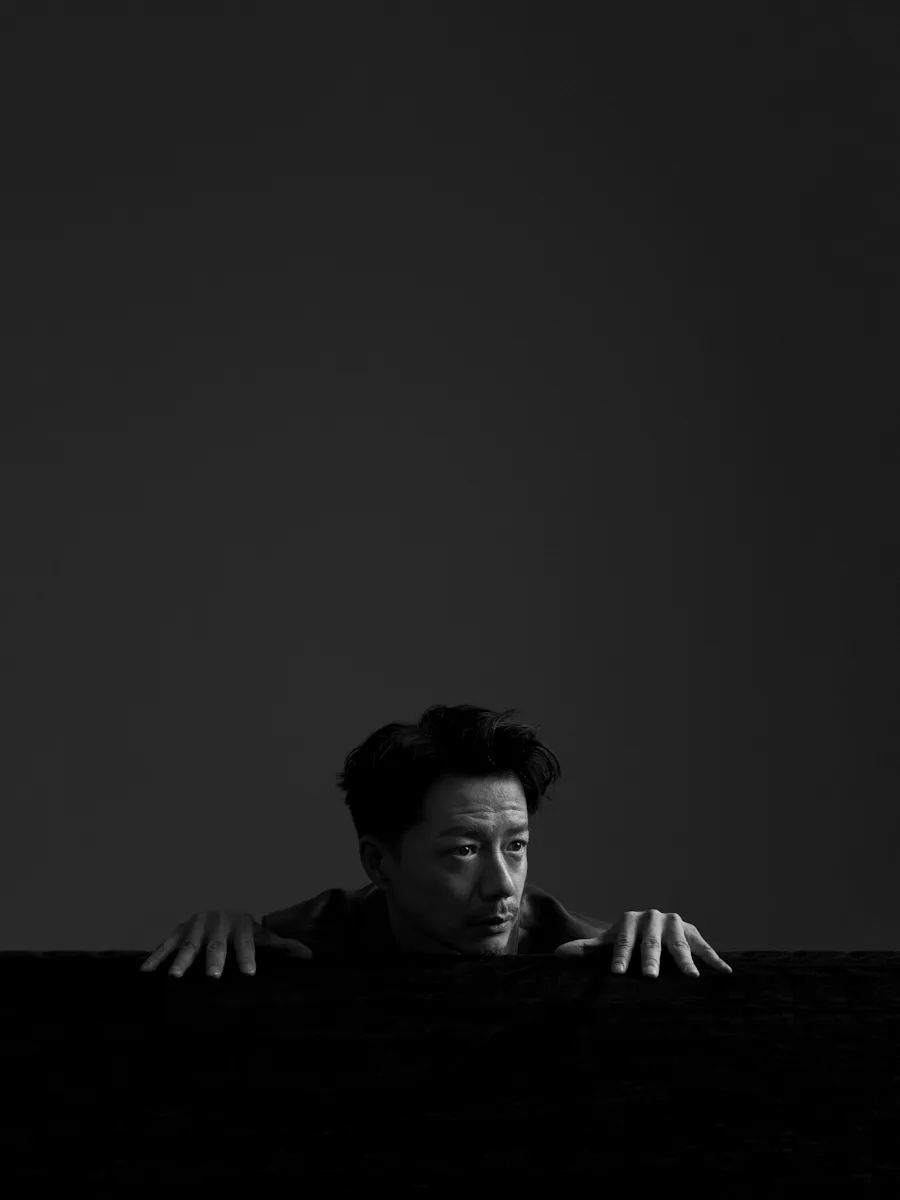
Alexvi, Back to Black, 2009-2022,80 x 60cm, Giclee Print
Alexvi said, “Table is Stage.” In the built-in white light source, and in Rembrandt-styled space atmosphere, Alexvi weakens or even erases the texture of most of the subjects, so that everyone looks like a clean-cut plastic statue. The corresponding is the black and white moving image “Fifteen Minutes” (2021) series. He has recorded the footage in the photographing process. There is no fixed light source in the scene. A light bulb with strong white light swings overhead, making the photo full of alienated mystery and anxiety. He is presenting the “15-minute reality”, but not the so-called “15-minute eternity” of Warhol. For Alexvi, the dark stage with flickering light not only belongs to celebrities, but also each of us.
Obviously, what Alexvi cares about is not a specific person, but a certain network or chain he (or she) lives in. In this regard, celebrities, models and photographers like him, are no different from ordinary people.
These photographing behaviors remind us that one of the essence of photography is to construct the stage, which is both instantaneous and eternal, both realistic and symbolic. On this stage, everyone, including the photographer or artist, is a performer and not a performer at the same time. If society is a super stage, photography is just a miniature stage built into it. Also in this sense, it fully exposes the internal separation of photography itself. On the one hand, it dismembers the “self-sufficiency” and “subjectivity” of photography, ensuring it is available within your scope of vision. On the other hand, the “self-sufficiency” and “subjectivity” of photography are highly recognized. It not only remains independent from reality, but also thoroughly reveals the invisible reality, or exaggerates it in a limited way. Light is not only an element of photography, but also one of its essence, whether viewed from the technical or physical attributes of photography, or from its surface narrative or image construction. It is light that constructs the stage and the different distance between people and the stage, whether the light is natural or artificial.


